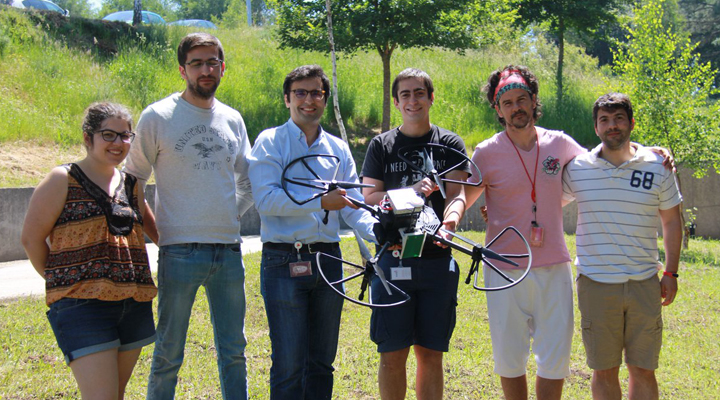
Luisa Wagner | AZO Space of Innovation
After earthquakes, terrorist attacks and other disasters, thousands of people can be trapped inside collapsed houses, factories or public buildings. Using radar technology that penetrates various materials, Alivetor by Gradiant is able to find buried victims near the surface of rubble. Its radar sensor is mounted onto a UAV, allowing the solution to cover vast areas in a reasonable time.
In 2017, Gradiant won the ESNC Galicia challenge and has thereby profited from extensive local business support from the local organiser of the ESNC, the Vigo Free Trade Consortium, and its four partners. Furthermore, the team was also awarded second place at the E-GNSS Accelerator Bootcamp in Tallinn. As a result, the company can now benefit from an additional EUR 62,000 in incubation and acceleration services for its business.
Discover how Alivetor helps save lives and get inspired by its latest successes. AZO Project Manager Luisa Wagner interviews Jorge Munir El Malek, Director of Advanced Communications at Gradiant, and DroneSAR, where we may be able to contribute. We are preparing and coordinating a Horizon 2020 proposal specifically focused on emergency technologies for first responders. And we met one of the partners who will be part of this project during the ESNC Awards Ceremony last year in Tallinn! Finally, the ESNC gave us a lot of visibility and allowed us to make our prototype better known all around Europe.
Last but not least, the E-GNSS Accelerator (Gradiant was awarded as one of the top three candidates at the E-GNSS Accelerator Bootcamp 2017 in Tallinn) definitely helped us develop our idea: We were able to make significant advancements in product design, competitor analyses and legal analyses thanks to the E-GNSS Accelerator’s benefits. In fact, the onboard prototype shown was developed thanks to the programme. Besides that, our attendance at UNVEX SECURITY & DEFENCE 2018, a European conference and exhibition related to Remotely Piloted Aircraft Systems (RPAS) focused on security and defence, and further events were made possible thanks to the E-GNSS Accelerator and enabled us to meet further potential customers.
How and when did the idea for your application emerge?
JMM & PG: Gradiant has been working on this technology for different applications since 2013. Since the very start, we were aware of the fact that this technology could be used to detect victims trapped beneath rubble or covered by different materials. As years passed, Gradiant became a reference in technologies for drones, among other things, with projects related to videoanalytics, communications systems and even a system to detect and neutralise drones.
That’s when we realised that LifeSensor, our technology for life monitoring, had the perfect size and weight to be installed into a small drone such as the ones search teams were starting to use for reconnaissance tasks.
Let’s reach for the stars – what is going to happen in your project’s future?
JMM & PG: We follow an agile methodology based on a discovery and delivery paradigm focused on defining our product based on the information we obtain from end users and experts. So far, we have contacted and shown the concept to multiple search and rescue teams and first responders, and, by gathering feedback about usability and expected features, we are evolving the product specification to make it useful and usable for them. We highlighted the first public presentation of the Alivetor prototype at UNVEX SECURITY & DEFENCE 2018 this spring.
After consolidating the product concept, we will develop and deliver the first complete release of the product and commercialise it through partnering channels. And, hopefully, one day, we may help to save some lives.


